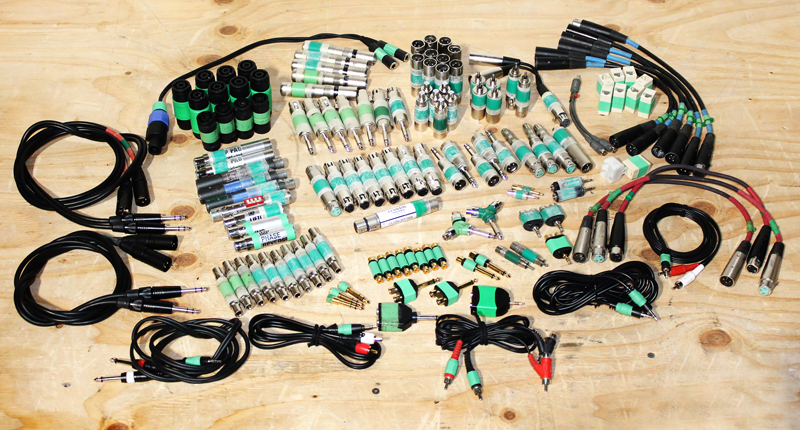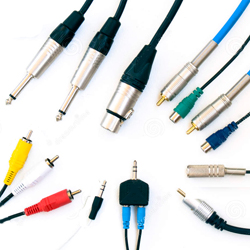The majority of live shows and events present interconnect challenges. We need to interface our gear with installed house systems, recording or broadcast trucks, A/V companies, rental gear, and even equipment from our own inventory that has different connectors.
My company’s inventory, for example, consists of various analog and digital consoles, some of which have 1/4-inch TRS (tip/ring/sleeve) connectors for outputs, while others have XLR connectors and still others are outfitted with some combination of both.
As a general rule, I don’t carry 1/4-inch TRS cables to shows so instead rely on adapters to interface mixers, processors, amplifier racks and powered loudspeakers.
And on freelance gigs, it’s not uncommon to have to hook up equipment from multiple rental houses and combine them into a working system. This necessitates carrying an assortment of adapters if I want to have audio come show time.
Adapters are available in three main styles, including barrel, box and cable. Barrel adapters are compact and usually just interface one connector type to another, but larger barrels may house internal components or even external switches.
Box adapters offer more space for connectors as well as internal components like transformers, and usually provide for multiple connections/channels. Most are made of metal that shields against electromagnetic interference (EMI). An example is a common direct box (DI) that converts a high-impedance signal with 1/4-inch input to a low-impedance mic level XLR output.
Cable adapters have one connector type (or gender) at each end, with a length of cable in between. They can also be of the “Y” or “splitter” type where two cables exit a single connector. Let’s take a look at the different types of adapters that are common in live audio, as well as other interfaces and test devices that I’ve found to be essential in 30-plus years of doing this work.

Barrel Adapters. I carry an assortment to interface between 1/8-inch TRS (common for headphones), 1/4-inch unbalanced 2-conductor, 1/4-inch TRS balanced 3-conductor, XLR and RCA. The ones I use most often interface 1/4-inch TRS with XLR.
Cable Adapters. They’re handy, allowing direct connection to gear without needing a separate cable. I’ve hand-made an assortment of 1/4-inch TRS to XLR short cable adapters that come in handy to interface gear between these two common output connections.
Headphone Adapters. For using 1/8-inch TRS headphone, in-ear monitor and ear buds with a standard 1/4-inch output jack.
Barrel Turnarounds. I carry a bunch of XLR male-to-male and XLR female-to-female barrel turnarounds to every gig. They’re mainly used to turn snake channels from a send to a return or vice versa, but they also come in handy when a stage hand has inadvertently run a very long XLR cable in the wrong direction.
Transformer Barrels. These come in two types. One type converts an XLR mic level into a high-impedance 1/4-inch plug, great when you need another mic input but have used up all the channels with mic preamps in a small console. Simply plug one of these into the mono input of a stereo channel, and presto, extra mic input.
The other type sports a 1/4-inch jack and converts high impedance signal into a mic level via a male XLR. It’s basically a “mini DI” and comes in handy when a band shows up with 15 1/4-inch keyboard and sampler/sequencer outputs and there’s only 12 DI boxes in your workbox.















